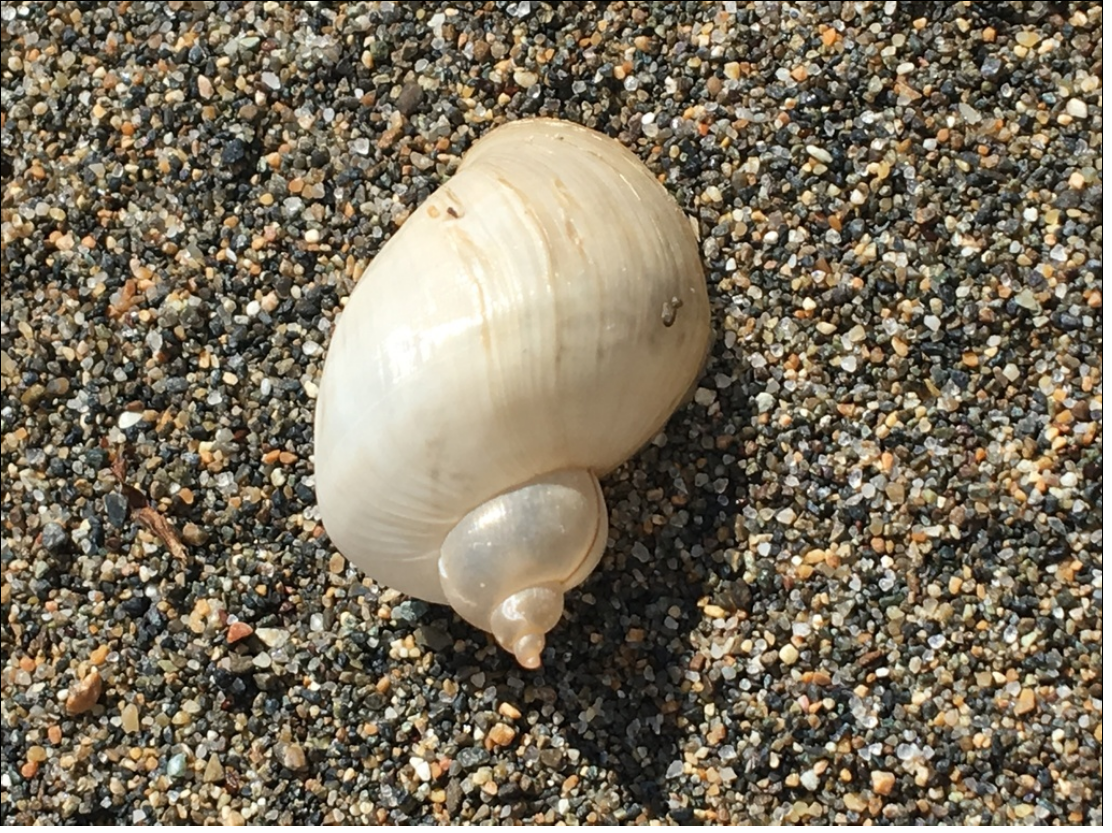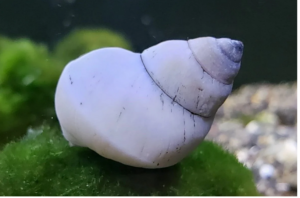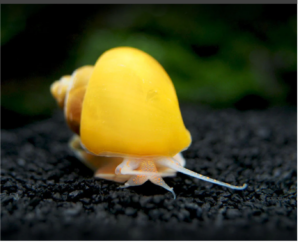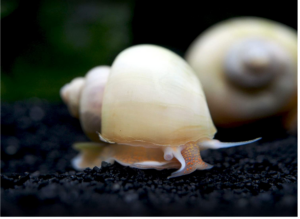Deciding on suitable pets to keep in a tank can be daunting due to the numerous available options. Perhaps someone has suggested the pond snail to you, and you’re still unsure whether it would make a great addition.
The pond snail is an omnivore that feeds on aquatic plant matter, algae, and deceased tank mates. It is a hermaphrodite and lays batches of 50-100 eggs. They thrive in tank environments with water temperatures of 60-75°F (16-24°C), a pH range of 6.0-8, and water hardness between 4-20 kH.
This comprehensive guide provides valuable insights into rearing pond snails. It covers essential aspects such as tank setup, tank mates, feeding, breeding, and common issues these snails face.
Pond Snail Origin and Habitat
Pond snails (Lymnaea stagnalis) belong to the Gastropoda class and Lymnaeidae family. They are widely distributed in freshwater bodies across:
- North America
- Europe
- New Zealand
- North Asia
In the wild, the snail prefers slow-flowing or stagnant water. It is commonly found in shallow ponds with dense vegetation, where it feeds on algae and decaying matter.
The species is pulmonate, meaning they breathe through the lungs instead of the gills.
Research, however, also shows that this species also breathes quite well through the skin, explaining how they survive for several days underwater without coming to the surface to breathe.
Several species of pond snails include, but are not limited to, the following:
- Great Pond Snail/Common Pond Snail
- Wandering Pond Snail
- Dwarf Pond Snail
- Ramshorn Pond Snail
- Big Ear Pond Snail
This guide will primarily focus on the great pond snail, the most common in the UK.
Great Pond Snail Appearance and Size
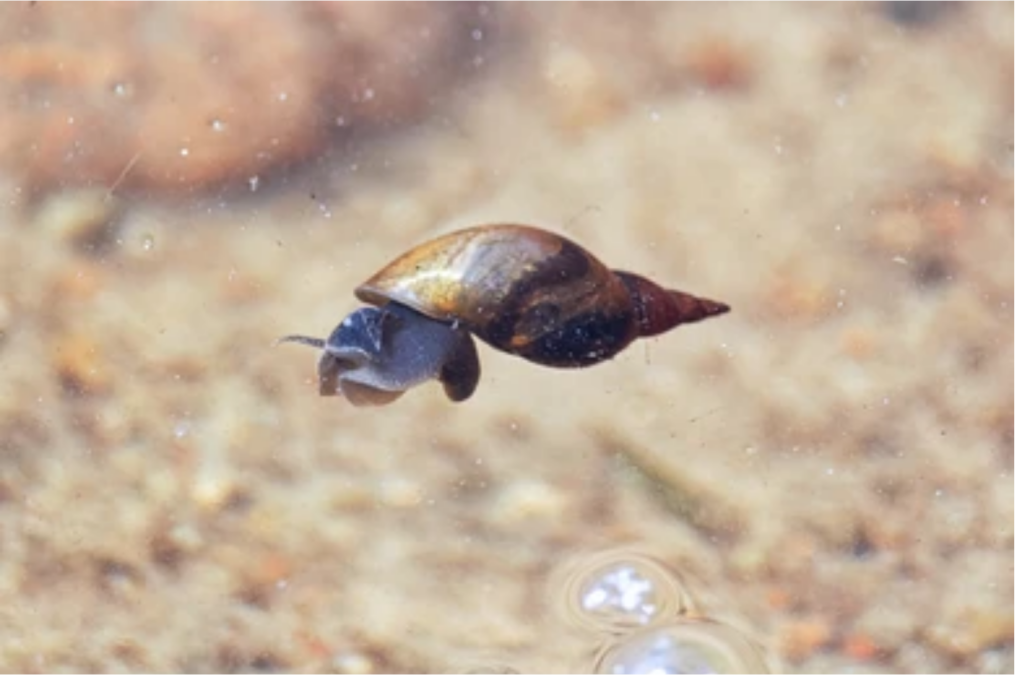
The great pond snail, the largest freshwater snail in the UK, is easily recognizable with slight color and shell shape variations. Typically, these snails have tall and slender round shells with various patterns, such as spots and stripes.
The shells expand outward towards the bottom, exhibiting a pointed shape. Gray-brown or black are the most common shell colors, although slight variations are possible.
Mature pond snail shells have 2-4 small whorls adorned with tiny dark spots or stripes, lending them a beautiful appearance.
These snails have a brownish-grey head with a pair of thick triangular tentacles resembling horns. On the sides of the snail’s head, there are small-sized but visible eyes. Except for the black Japanese trapdoor pond snails, this snail species lacks an operculum.
The size of pond snails can vary depending on their environment. In captivity, they generally grow to an average diameter of 2 inches (5 cm) and a length of 3 inches (7.6 cm).
However, even in the best tank conditions, common pond snails rarely exceed 3 inches (7.6) in size. In the wild, where food is abundant, these snails can reach larger sizes.
Pond Snail Lifespan
The lifespan of a pond snail typically ranges from 1 to 2 years. However, the actual lifespan can be influenced by various factors, such as:
- Water quality
- Feeding habits
- Overall snail health
Generally, larger snails are older than smaller ones. These snails are known for their relatively fast maturation, reaching sexual maturity at around 4 months.
However, this timeframe can vary depending on diet and temperature. Higher temperatures and abundant feeding promote faster maturity, while the opposite delays it.
Buying Pond Snails
As mentioned earlier, many pond snails are available for sale in UK pet stores.
When purchasing pond snails for your aquarium, you should choose active snails firmly attached to hard surfaces. Their activity level is an indication of good health.
Avoid snails lying on the tank floor or floating upside down in the water, as these are likely dead or dying. Additionally, pay attention to the condition of their shells. Discolored, cracked, or pitted shells indicate poor care and can be a precursor to illness and death.
Differentiating between male and female pond snails is challenging because they are monomorphic, meaning that males and females have similar physical characteristics.
To ensure a balanced population, it is recommended to obtain a group of 5-6 snails, which should provide a mix of both males and females in your tank.
Pond Snail Care
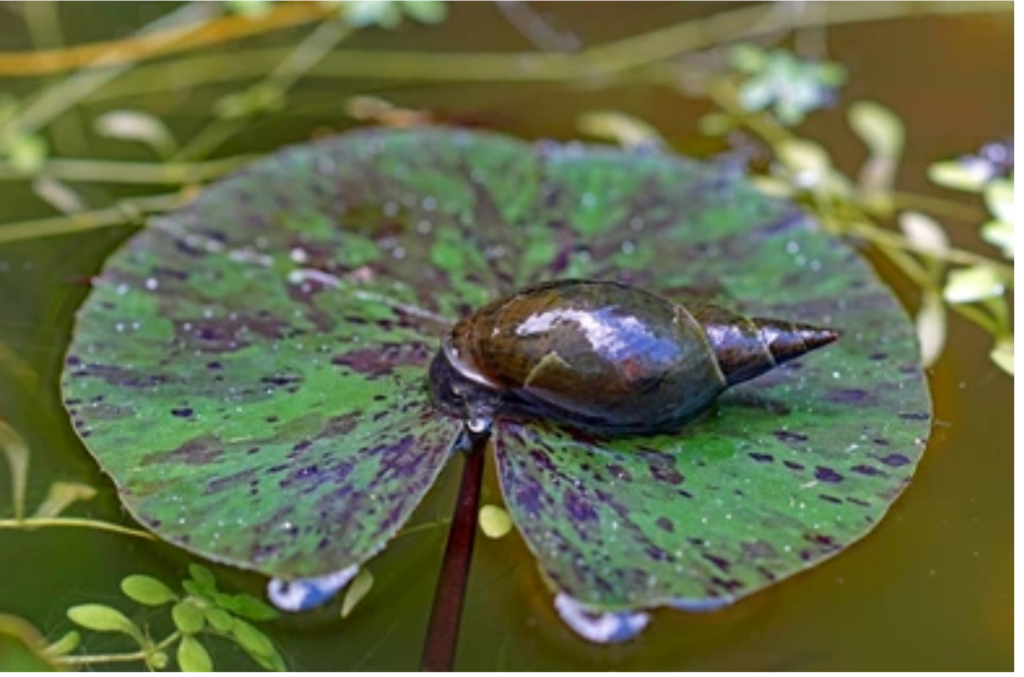
Tank Set Up and Substratum
Pond snails are resilient creatures and are incredibly easy to care for. They can adapt well to various ranges of water parameters. They will thrive in different environments if ammonia levels and temperatures do not become excessively high.
Related Reading: Can Snails Live in High Ammonia?
In fact, pond snails are one of the few species that can survive the cycling process, allowing you to introduce them into your tank without waiting for beneficial bacteria to establish. Surprisingly, these snails can be kept in small buckets and still thrive.
When it comes to tank size, pond snails are not particularly demanding. However, I recommend a minimum tank size of 1 gallon (4 liters) per snail.
For effective breeding, it is best to have around 5 pond snails, so a 10-gallon (38-liter) tank is recommended as the minimum for pond snail rearing.
Larger tanks provide a greater surface area for oxygen absorption, ensuring the snails have ample oxygen supply.
Moreover, larger tanks are better equipped to handle shifts in water parameters. For instance, a smaller tank could experience dangerously high ammonia levels in a two-day power outage, endangering the tank’s inhabitants.
On the other hand, a larger tank would better absorb the ammonia, increasing the chances of survival for your pets.
In that regard, I recommend the Aqueon Standard Glass 10-Gallon Rectangular Tank from Amazon. This is a reliable and affordable option for beginner aquarists looking to keep a group of snails. This clear, scratch-resistant tank is easy to assemble and offers great value.
| Preview | Product | |
|---|---|---|

|
Aqueon Standard Glass 10 Gallon Rectangular Tank for Aquariums & Terrariums | Check Price |
Here are the ideal tank parameters for optimal pond snail growth:
| Parameter | Ideal Range |
| pH | 6-8 |
| Temperature | 60-75°F (16-24°C) |
| Hardness | 4-20 kH |
While pond snails can tolerate a pH as low as 3.5, extremely acidic conditions can hinder calcium uptake and impede proper shell formation.
Tank Vegetation and Decoration
Pond snails may not be particularly concerned about tank decorations and substratum, but incorporating healthy aquatic plants can benefit their populations.
Decaying plant matter, such as leaves and stems, serves as a food source for pond snails. The presence of vegetation keeps them engaged as they search for food.
Additionally, substrata like gravel and coarse sand attract pond snails to the bottom of the tank, where they create chambers. This behavior helps stir up debris and maintain a clean tank environment.
Regarding decorations, pond snails enjoy interacting with various items in the tank. They spend time playing and grazing on decorations.
However, it is important not to overcrowd the tank with excessive vegetation and decorations. Pond snails are relatively large and may struggle to navigate through dense vegetation.
Pond Snails Diet
Pond snails are omnivorous and will consume a wide range of food sources.
They feed on the following:
- Algae
- Leftover food
- Decaying plant matter
- Deceased tank pets such as fish.
There is usually no need for supplemental feeding unless your tank is overcrowded with pond snails, which may result in underfeeding.
In such cases, you can provide supplemental foods like:
- Algae wafers
- Calcium pellets
- Fish flakes
- Bottom feeder tablets
Related Reading: Can You Use Repti Calcium for Snails?
Like other snails, pond snails require sufficient calcium in their diet for proper shell development. You can supplement their calcium intake by adding items such as:
- Eggshells
- Cuttlefish bones
- Calcium pellets
Calcium pellets are a particularly good choice as they readily release calcium into the water. I recommend using the Seachem Reef Calcium 500 ml blend for pond snail tanks. This calcium blend is affordable, easy to use, environmentally friendly, and rich in calcium.
| Preview | Product | |
|---|---|---|

|
Seachem Reef Calcium 500ml | Check Price |
Some fish species that feed on pond snails include:
- Cory catfish
- Betta fish
- Gourami
- Goldfish
- Mosquito fish
- Yellow perch
- green spotted puffer
Other predators that enjoy a pond snail meal include:
- Assassin snails
- Loaches
- Birds
- Frogs
- Large-sized shrimp
With these various options, it can be a good idea to supplementally feed pond snails for their growth. While pond snails generally do not feed on plants, there have been observations of them drilling holes in leaves and other soft parts of aquatic plants.
Underfed pond snails may consume entire leaf portions. Furthermore, underfed pond snails can exhibit cannibalistic behavior and consume their own young or eggs.
Additionally, small, non-aggressive snail species in the tank can be vulnerable to underfed pond snails. Slower snails are easily hunted and eaten by pond snails.
Pond Snails Breeding
The breeding behavior of pond snails is just as fascinating as their feeding habits. These snails are hermaphrodites capable of cross and self-fertilization, although they have shown a preference for cross-fertilization.
Mating roles are determined by mood and age. Older snails prefer mating as females, as they have more resources to invest in reproduction. Younger snails, being energetic and lighter, often mount larger “females.”
However, these roles are not strictly limited, and any snail can choose to play the male or female role. The male snail mounts the female in a reverse manner and inserts spermatozoa into the gonopore.
This intricate process can take hours, but it is truly fascinating to observe. The received sperm is stored and can be used for up to 4 months.
About a week after mating and fertilization, the female snail will lay eggs in large cocoons, usually stored just below the water line or on hard surfaces within the tank. Each egg cocoon contains between 100-200 eggs.
Approximately 10 days later, tiny pond snails will emerge from these eggs, visible with the aid of a magnifying glass. Another 20 days later, their tiny shells become visible to the naked eye.
Unlike other snail species, pond snail eggs do not go through a free-living larval stage. Within a month, you can have up to 200 pond snail babies in your tank.
Suitable Tank Mates
Pond snails can coexist peacefully with various fish and snail species considered peaceful or semi-aggressive.
Some suitable tank mates for pond snails include:
| Fish | Snails | Small-sized Shrimp |
| Cory Catfish | Nerite Snails | Bamboo Shrimp |
| White Cloud Mountain Minnow | Red Ramshorn Snails | Amano Shrimp |
| Pictus Catfish | Gold Inca Snails | Ghost Shrimp |
| Diamond Tetra | Ivory Snails | Red Cherry Shrimp |
| Pleco |
Any tank creature that poses a threat to other freshwater snail species will also pose a threat to pond snails.
Pond Snails Common Problems
Pond snails, like other freshwater snails, are sensitive to copper. It is important to remove any traces of copper from your tank.
One recommended product for this purpose is the Poly Filter Poly-Bio-Marine for Fish Aquarium from Amazon. This filter effectively removes copper and other heavy metals from your tank and is suitable for freshwater and saltwater setups.
| Preview | Product | |
|---|---|---|

|
Poly Filter Poly-Bio-Marine for Fish Aquarium – Works for Freshwater and Saltwater Fish Tanks -… | Check Price |
Additionally, it is crucial to maintain optimal water conditions and cleanliness to prevent any diseases that may affect pond snails or other freshwater snails.
Closing Remarks
Pond snails have positive and negative aspects, depending on one’s perspective. While they can be invasive, their benefits outweigh the drawbacks.
They are low maintenance, making them suitable for beginners, and their population can be easily controlled by other tank creatures. Their resilience also makes them an ideal choice for newcomers.
With valuable insights on pond snail rearing, it’s time to consider introducing them to your tank.
Should you have any questions or suggestions to enhance this blog, please feel free to contact us or leave a comment below.
